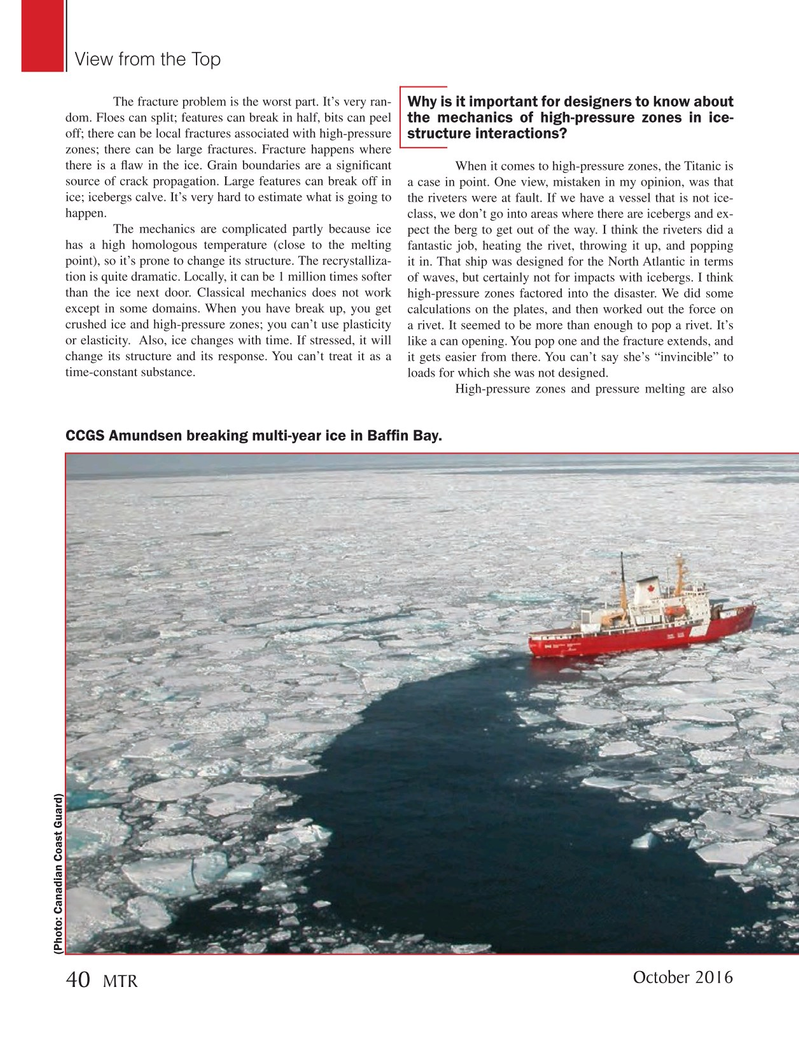
Page 40: of Marine Technology Magazine (October 2016)
AUV Operations
Read this page in Pdf, Flash or Html5 edition of October 2016 Marine Technology Magazine
View from the Top The fracture problem is the worst part. It’s very ran-
Why is it important for designers to know about dom. Floes can split; features can break in half, bits can peel the mechanics of high-pressure zones in ice- off; there can be local fractures associated with high-pressure structure interactions?
zones; there can be large fractures. Fracture happens where there is a ? aw in the ice. Grain boundaries are a signi? cant When it comes to high-pressure zones, the Titanic is source of crack propagation. Large features can break off in a case in point. One view, mistaken in my opinion, was that ice; icebergs calve. It’s very hard to estimate what is going to the riveters were at fault. If we have a vessel that is not ice- happen. class, we don’t go into areas where there are icebergs and ex- The mechanics are complicated partly because ice pect the berg to get out of the way. I think the riveters did a has a high homologous temperature (close to the melting fantastic job, heating the rivet, throwing it up, and popping point), so it’s prone to change its structure. The recrystalliza- it in. That ship was designed for the North Atlantic in terms tion is quite dramatic. Locally, it can be 1 million times softer of waves, but certainly not for impacts with icebergs. I think than the ice next door. Classical mechanics does not work high-pressure zones factored into the disaster. We did some except in some domains. When you have break up, you get calculations on the plates, and then worked out the force on crushed ice and high-pressure zones; you can’t use plasticity a rivet. It seemed to be more than enough to pop a rivet. It’s or elasticity. Also, ice changes with time. If stressed, it will like a can opening. You pop one and the fracture extends, and change its structure and its response. You can’t treat it as a it gets easier from there. You can’t say she’s “invincible” to time-constant substance. loads for which she was not designed. High-pressure zones and pressure melting are also
CCGS Amundsen breaking multi-year ice in Baf? n Bay. (Photo: Canadian Coast Guard)
October 2016 40
MTR
MTR #8 (34-49).indd 40 9/27/2016 2:48:26 PM

 39
39

 41
41
